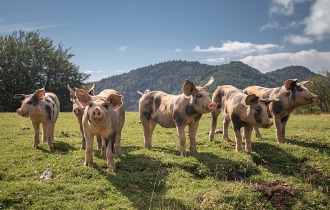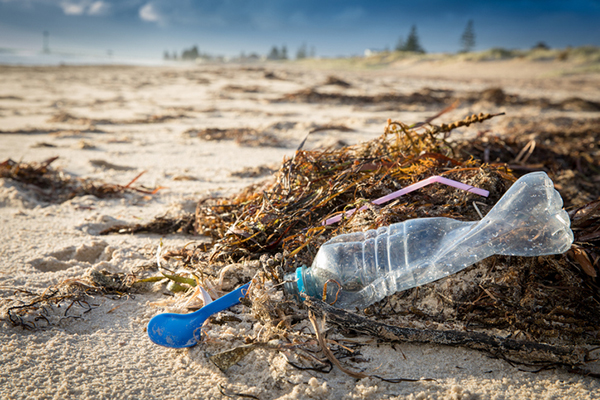New microbes discovered in a beetle, marine plastic and on a beach
Posted on January 19, 2021 by Laura Cox
Each month, the Microbiology Society publishes the International Journal of Systematic and Evolutionary Microbiology (IJSEM), which details newly discovered species of bacteria, fungi and protists. Here are some of the new species that have been discovered and the places they’ve been found.

Mycobacteria are a well-known group of microbes due to Mycobacterium tuberculosis and other tuberculosis-causing species. There are a number of other, non-tuberculosis causing mycobacteria known to infect humans and animals, however, their role in disease is not well understood. Mycobacteriosis – infection by a non-tuberculosis causing mycobacteria – is not unusual in pigs and causes symptoms such as loss of appetite and diarrhoea. Researchers investigating signs of mycobacteria infection on pig farms in Switzerland found an unusual cause; a new species of bacteria which had never been seen before. The researchers named this new species Mycobacterium helveticum after it was collected from the lesions of two pigs. These two pigs lived on farms around 10 kilometres apart, with no known movement of animals between the two farms.
Two new species of micro-organism have been found in food this month. Whilst assessing the microbes present in pre-pasteurised milk and the intermediate products dairy processing, researchers based in Germany discovered Pseudomonas cremoris. This new bacterium produces beige, glossy colonies when cultured in the lab and prefers cooler temperatures for growth, with an optimum incubation temperature of 27-29°C.
Other microbes were also a source of new micro-organisms in IJSEM. Alkalicaulis satelles, the first species in a new genus was found in a decaying sample of the blue-green cyanobacteria Geitlerinema. Meanwhile, researchers in China discovered Algibavillus agarilyticus, a tiny, round bacterium, on the surface of a marine red algae.
Two new microbes were discovered in animals this month. Poseidonibacter parvus, the newest species of a relatively new genus was isolated from a squid. Other species in the Poseidonibacter genus have also been isolated from marine environments and animals, including scallops and molluscs. Meanwhile, researchers based in South Korea discovered Tessaracoccus coleopterorum in a beetle. This new species of bacteria was collected from the intestine of the dark diving beetle Hydrophilus acuminatus, a water beetle that feeds on aquatic plants.
One might not expect plastic straws floating in the sea to be the source of a new species of bacteria. However, plastic pollution collected from the Mediterranean Sea near to a Greek island is where researchers discovered Parvularcula mediterranea. This dark-orange bacterium could be part of the ‘plastisphere’ – an ecosystem that has evolved to thrive in human-made plastic environments. Meanwhile, researchers discovered a bright yellow species of bacteria on a beach in India. This new microbe, which they named Halomonas icarae, was found in a soil sample collected from Pentha beach and grows best in salty conditions.


